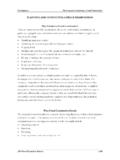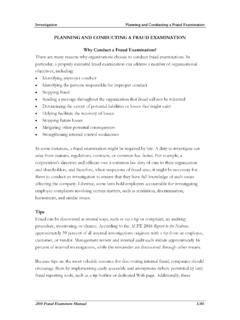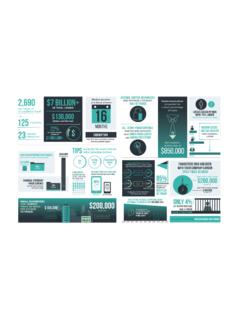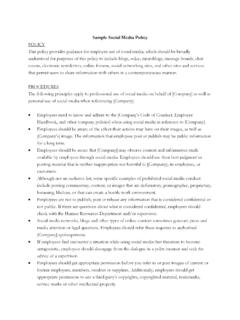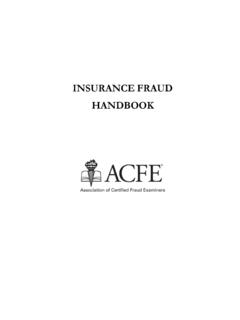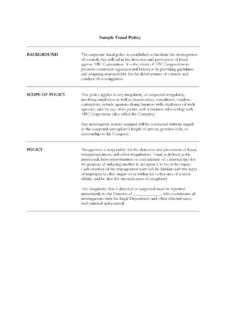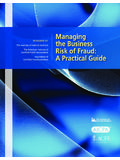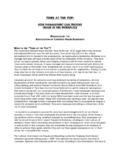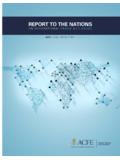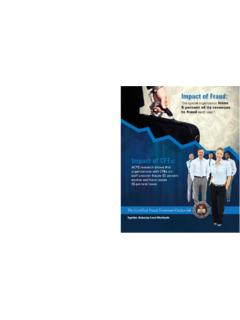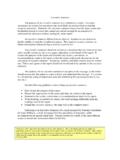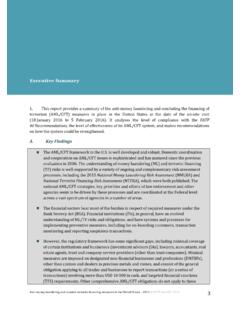Transcription of Risk Management Guide EXECUTIVE SUMMARY
1 Committee of Sponsoring Organizations of the Treadway CommissionRisk Management GuideEXECUTIVE SUMMARYB | Fraud Risk Management Guide - EXECUTIVE SUMMARY | COSO/ACFEc o s o . o r gPrincipal AuthorsDavid L. Cotton, CPA, CFE, CGFMC hairman, Cotton & Company LLPS andra Johnigan, CPA/CFF, CFEO wner, Johnigan, Givarz, CPAT echnical Editor, Public Company Accounting Oversight Board (Retired)AcknowledgementsCOSO and ACFE thank each of the Fraud Risk Management Task Force and Advisory Panel members (see Page vii) for their generous contributions of time, resources and particular, COSO and ACFE gratefully acknowledge David L. Cotton, Chair of the Fraud Risk Management Task Force, for his outstanding leadership and eRorts toward the completion of this Board MembersRobert B. Hirth, ChairDouglas F. Prawitt, , CPAA merican Accounting AssociationCharles Landes, CPAA merican Institute of CPAs (AICPA)Mitchell A.
2 Danaher, CMAF inancial Executives InternationalSandra Richtermeyer, , CMA, CPAI nstitute of Management AccountantsRichard F. Chambers, CIA, QIAL, CGAP, CCSA, CRMAThe Institute of Internal AuditorsThis project was commissioned by the Committee of Sponsoring Organizations of the Treadway Commission (COSO), which is dedicated to providing thought leadership through the development of comprehensive frameworks and guidance on enterprise risk Management , internal control, and fraud deterrence designed to improve organizational performance and governance and to reduce the extent of fraud in is a private-sector initiative jointly sponsored and funded by the following organizations:PrefaceAmerican Accounting Association (AAA) Instituteof CPAs (AICPA) Executives International (FEI) Institute of Management Accountants (IMA) Institute of Internal Auditors (IIA) o s o . o r gSeptember, 2016 Research Commissioned by Committee of Sponsoring Organizations of the Treadway CommissionRisk Management GuideEXECUTIVE SUMMARYCOSO/ACFE | Fraud Risk Management Guide | vc o s o.
3 O r gForewordIn 1992 the Committee of Sponsoring Organizations of the Treadway Commission (COSO) released its Internal Control Integrated Framework (the original framework). The original framework has gained broad acceptance and is widely used around the world. It is recognized as a leading framework for designing, implementing, and conducting internal control and assessing the effectiveness of internal revised the original framework in 2013 (2013 framework). The 2013 framework incorporates 17 These 17 principles are associated with the five internal control components, and provide clarity for the user in designing and implementing systems of internal control and for understanding requirements for effective internal control. COSO makes clear that for a system of internal control to be effective, each of the 17 principles is present, functioning, and operating together in an integrated publication, Fraud Risk Management Guide ( Guide ), is intended to be supportive of and consistent with the 2013 Framework and can serve as best practices guidance for organizations to follow in addressing this new fraud risk assessment organizations desiring to establish a more comprehensive approach to managing fraud risk, this Guide includes more than just the information needed to perform a fraud risk assessment.
4 It also includes guidance on establishing an overall Fraud Risk Management Program including: Establishing fraud risk governance policies Performing a fraud risk assessment Designing and deploying fraud preventive and detective control activities Conducting investigations, and Monitoring and evaluating the total fraud risk Management programThis Guide is designed to be familiar to COSO Framework users. It contains principles and points of This Guide s five principles are consistent with the five COSO Internal Control Components3 and the 17 COSO Guide draws from and updates a 2008 product published and sponsored by the American Institute of CPAs (AICPA), Institute of Internal Auditors (IIA), and Association of Certified Fraud Examiners (ACFE). This prior publication, Managing the Business Risk of Fraud: A Practical Guide , contained similar guidance for establishing a comprehensive Fraud Risk Management Program and has been used by many organizations to manage fraud risk.
5 COSO is appreciative of the work done by the task force that produced this prior publication. This new Guide builds on that previous product by updating it for more recent developments, revising terminology to be consistent with newer COSO terminology, and adding important information related to technology developments specifically data 8, one of the risk assessment component principles, states:The organization considers the potentialfor fraud in assessing risks to the achievement of Per the 2013 COSO Framework, relevant principles represent fundamental concepts associated with components of internal Per the 2013 COSO Framework, points of focus are important characteristics of principles. 3 Per the 2013 COSO Framework, a component is one of five elements of internal control. The internal control components are the Control Environment, Risk Assessment, Control Activities, Information and Communication, and Monitoring Activities.
6 Vi | Fraud Risk Management Guide | COSO/ACFEc o s o . o r gThe Guide s EXECUTIVE SUMMARY provides a high-level overview intended for the board of directors and senior Management and is designed to explain the benefits of establishing strong anti-fraud policies and controls. The Guide s appendices contain valuable templates, samples, examples, and tools to assist users in implementing the Guide s best addition, the Guide contains hyperlinks to several valuable automated tools and templates that can be used to make implementation and documentation of a comprehensive Fraud Risk Management Program more has also published Enterprise Risk Management Integrated Framework (ERM Framework). This Guide , the 2013 COSO Framework, and the ERM Framework, are intended to be complementary. Depending on how an organization implements the Internal Control Framework, the ERM Framework, and this Guide , there may be overlapping and interconnecting areas.
7 Fraud risk can affect areas beyond accounting and financial Management activities. Indeed, an organization seeking to minimize the adverse impacts of fraud needs to consider fraud risk in all areas of the enterprise and its COSO Board would like to thank members of the Task Force that developed this Guide , the Advisory Panel that reviewed drafts of the Guide and provided valuable feedback, and the COSO Advisory Council for their contributions in reviewing the , the COSO Board gratefully acknowledges David L. Cotton, Chair of the Task Force, for his outstanding leadership and efforts toward the completion of this B. Hirth, ChairJames D. RatleyACFE President and CEOR obert B. Hirth, D. RatleyACFE President and CEOCOSO/ACFE | Fraud Risk Management Guide | viic o s o . o r gFraud Risk Management Task ForceFraud Risk Management Advisory PanelBarbara AndrewsAICPA Michael BirdsallComcast CorporationToby BishopFormerly ACFE, DeloitteMargot CellaCenter for Audit QualityDavid CoderreCAATSD avid L.
8 Cotton, ChairCotton & Company LLPJ ames DalkinGAORon DurkinDurkin Forensic, AmiramColumbia University Business SchoolZahn BozanicThe Ohio State UniversityGreg BrushTennessee Comptroller of TreasuryTamia BuckinghamMassachusetts School Building AuthorityAshley L. ComerJames Madison UniversityMolly Dawson Cotton & Company LLPEric Eisenstein Cotton & Company LLPM ichael Justus University of Nebraska Theresa Nellis-MatsonNew York Office of the State Comptroller Jennifer PapermanNew York Office of the State Comptroller Daniel RossiNew York Office of the State Comptroller Lynda Harbold Schwartz Upland Advisory LLC Rosie Tomforde Regional Government Bert EdwardsFormerly State DepartmentFrank FaistCharter CommunicationsEric FeldmanAffiliated Monitors, GeorgeUSAC John D. GillACFEL eslye GivarzFormerly AICPA, PCAOBC indi HookComcast CorporationSandra K. JohniganJohnigan, PCBill LeoneNorton Rose Fulbright Andi McNealACFE Linda MillerGAO Kemi OlatejuGeneral ElectricChris PembrokeCrawford & Associates, PC J.
9 Michael PeppersUniversity of Texas Kelly Richmond PopeDePaul UniversityCarolyn Devine SaintUniversity of VirginiaJeffrey SteinhoffKPMG William TiteraFormerly EYMichael UeltzenUeltzen & Company Pamela VerickProtiviti Vincent WaldenEY Bill WarrenPwC Richard Coast Guard Investigative ServiceThe COSO Board gratefully acknowledges David L. Cotton, Chair of the Fraud Risk Management Task Force, for his outstanding leadership and efforts toward the completion of this | Fraud Risk Management Guide | COSO/ACFEc o s o . o r gAll organizations are subject to fraud risks . It is impossible to eliminate all fraud in all organizations. However, implementation of the principles in this Guide will maximize the likelihood that fraud will be prevented or detected in a timely manner and will create a strong fraud deterrence effect. The board of directors5 and top Management and personnel at all levels of the organization including every level of Management , staff, and internal auditors have responsibility for managing fraud risk.
10 Particularly, they are expected to understand how the organization is responding to heightened risks and regulations, as well as public and stakeholder scrutiny; what form of Fraud Risk Management Program the organization has in place; how it identifies fraud risks ; what it is doing to better prevent fraud, or at least detect it sooner; and what process is in place to investigate fraud and take corrective action. This Fraud Risk Management Guide ( Guide ) is designed to help address these complex Guide recommends ways in which governing boards, senior Management , staff at all levels, and internal auditors can deter fraud in their organization. Fraud deterrence is a process of eliminating factors that may cause fraud to occur. Deterrence is achieved when an organization implements a fraud risk Management process that: Establishes a visible and rigorous fraud governance process Creates a transparent and sound anti-fraud culture Includes a thorough fraud risk assessment periodically Designs, implements, and maintains preventive and detective fraud control processes and procedures Takes swift action in response to allegations of fraud, including, where appropriate, actions against those involved in wrongdoingThis Guide provides implementation guidance that defines principles and points of focus6 for fraud risk Management and describes how organizations of various sizes and types can establish their own Fraud Risk Management Programs.
